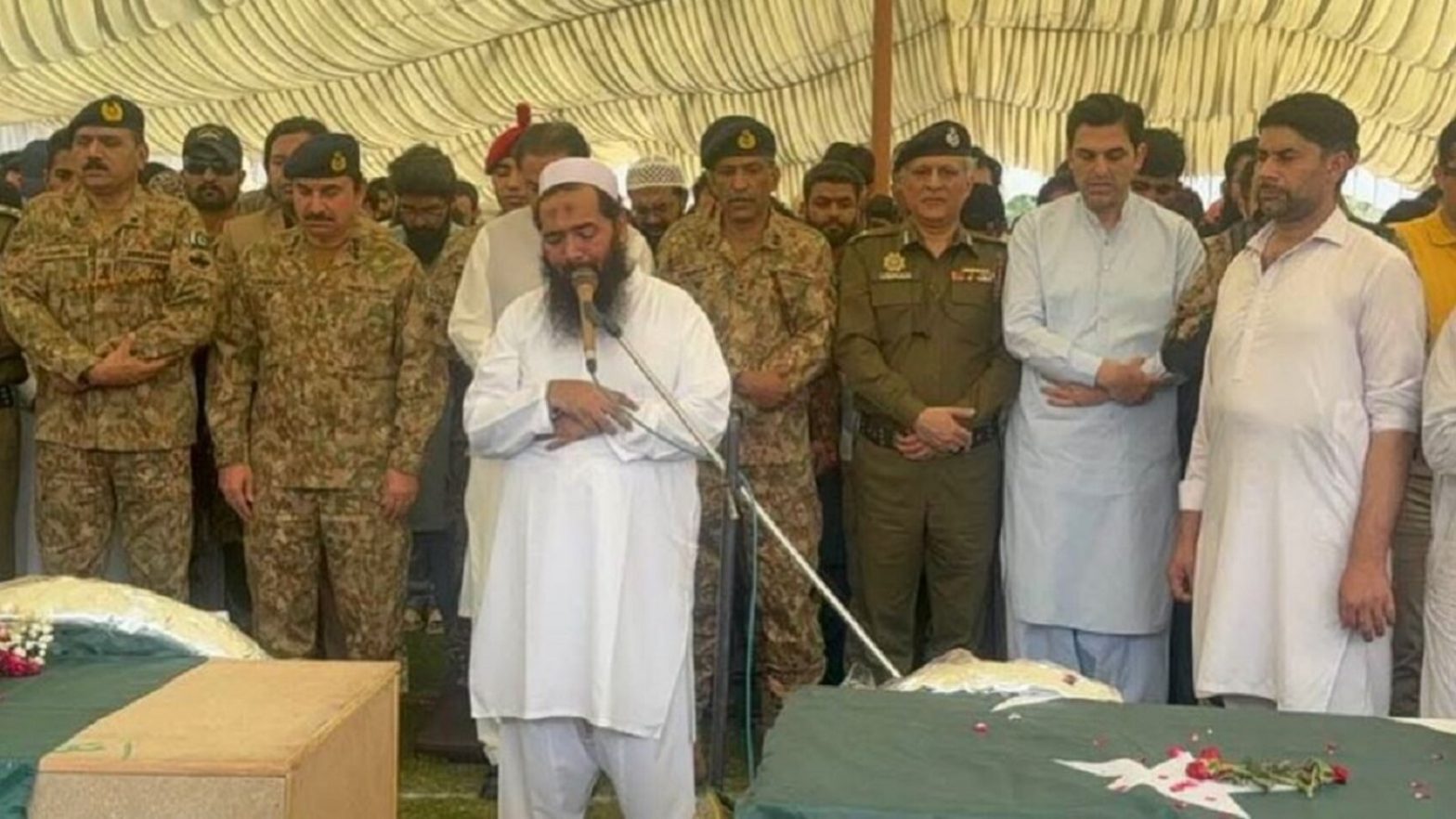
In a recent series of developments that took place during the Indo-Pak escalation, India has released the names of top Pakistani officials who attended the funeral of LeT terrorists, carried out by Abdul Rauf, who lost his life during the May 7 ‘Operation Sindoor’.
About Abdul Rauf Azhar?
Abdul Rauf Azhar was a high-ranking member of the terrorist organization Jaish-e-Mohammad (JeM). He was involved in several major attacks, including the 1999 hijacking of Indian Airlines Flight IC-814, the 2001 Indian Parliament attack, and the 2019 Pulwama bombing. Reports indicate that he was recently eliminated in India’s Operation Sindoor, which targeted terrorist hideouts in Pakistan and Pakistan-Occupied Kashmir.
As per the Ministry of Defence reports, LeT Commander Abdul Rauf, a Specially Designated Global Terrorist by the US Treasury, was killed in Pakistan.
During his funeral, Senior Pakistani military officials and the Punjab Inspector General of Police were present at the service. The Attendees also included Lt Gen Fayyaz Hussain, Major General Rao Imran, Brigadier Mohd Furqan from Administration, Usman Anwar, a Pakistan Punjab Legislator, and Malik Sohaib Ahmed.
Operation Sindoor?
This is to be noted that Operation Sindoor was launched by India on May 7, 2025, as a joint military strike involving the Army, Navy, and Air Force. The operation was a response to the Pahalgam terror attack on April 22, 2025, in which 26 people (25 Indians and 1 Nepali) were killed.
The operation lasted 23 minutes, during which 24 precision missile strikes were carried out, targeting 9 terror sites—4 inside Pakistan and 5 in Pakistan-occupied Jammu and Kashmir (PoK). The PoK targets included Sawal Nala, Syedna Bilal, Gulpur, Barnala, and Abbas. In Pakistan proper, strikes occurred at Bhawalpur, Muridke, Sarjal, and Mehmoona Joya. The defence ministry has identified 21 terrorist installations in Pakistan-Occupied Kashmir and Pakistan: Sawal Nala, Syed Na Bilal, Maskar-e-Aqsa, Chelabandi, Abdullah bin Masood, Dulai, Garhi Habibullah, Batrasi, Balakot, Oghi, Boi, Sensa, Gulpur, Kotli, Barali, Dungi, Barnala, Mehmoona Joya, Sarjal, Mudrike, and Bahawalpur.
The Indian Armed Forces used Rafale jets equipped with SCALP missiles and AASM Hammer bombs to destroy terror infrastructure linked to Jaish-e-Mohammed (JeM) and Lashkar-e-Taiba (LeT).
Recent Developments in the Matter
The tensions between the two neighboring nations become more intensified following a ceasefire agreement that has been violated. Pakistan breached the ceasefire within just 4 hours by initiating firing in Jammu and Kashmir’s Akhnoor sector and deploying drones along the border.
The Indian Armed Forces have been instructed to respond firmly to any further violations along the Line of Control (LoC) and the International Border. In response, India has intensified its surveillance and retaliatory strikes, using Harop drones to target terrorist hideouts. Pakistan retaliated with 26 drone swarms, triggering Indian air defense operations. Strategically, India has suspended the Indus Waters Treaty, leveraging diplomatic pressure on Pakistan. Meanwhile, domestic debates are heating up on the surface among the political leaders and the opposition.
